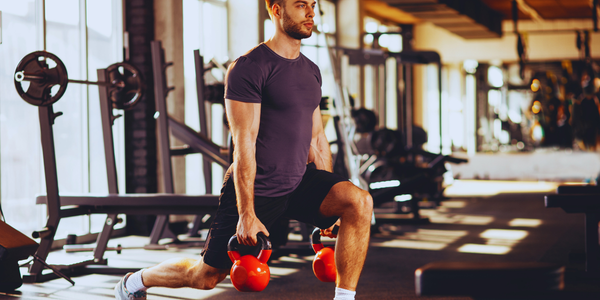Unlock Upper Body Power: The Science-Backed Benefits of Dumbbell Pull-Overs
Master the dumbbell pull-over to strengthen your chest, back, and core while improving shoulder mobility. Learn proper form and technique for maximum muscle gains

There’s a reason most men in today’s gyms flock to chest day: a strong, defined upper body isn’t just about looking good—it fuels performance, supports posture, and boosts overall health. But what if there’s a classic move, sometimes overlooked, that can turbocharge these results?
Whether chasing a bigger bench, carving out a broader chest, or supporting athletic goals in sports like swimming or climbing, the dumbbell pull-over deserves a spot in any well-rounded men’s fitness program. Backed by recent studies and expert recommendations, here’s why and how to use the dumbbell pull-over to build a stronger upper body—fast.
The Science Behind Dumbbell Pull-Overs
Recent research confirms the dumbbell pull-over’s effectiveness at recruiting major upper body muscles, including the pectoralis major (chest), latissimus dorsi (back), serratus anterior, triceps, and even the core stabilizers.
A 2025 training review points to the pull-over as a unique exercise that combines a deep stretch (keys for muscle growth) with dynamic movement involving both pushing and pulling muscles.
Expert Insight: Pull-overs also promote improved shoulder mobility—a must for men who want to stay athletic and pain-free into their 40s and beyond.
Unlike many upper-body lifts, they move the shoulder through an extended range, helping prevent stiffness common from desk jobs or repetitive sports.
Stat Snapshot: Strength training ranked #5 among top fitness trends for 2025, with men overwhelmingly targeting upper-body muscles in their workouts.
Perfecting Your Dumbbell Pull-Over Technique
Mastering form pays off with more growth and less risk:
- Lie perpendicular on a bench with only the upper back supported, feet flat on the floor for stability.
- Grasp a dumbbell with both hands over the chest, arms slightly bent.
- Lower the weight in a controlled arc behind your head, keeping hips and core engaged to avoid lower back arching.
- Pull the dumbbell back to a starting position using chest and lat power (not momentum).
- Reps: Shoot for 8–15 reps, focusing on quality over quantity, especially early on.
Trainer Tip: Maintain “soft” (slightly bent) elbows throughout to intensify chest and back activation while protecting the shoulder joint.
Training Smarter: Programming the Dumbbell Pull-Over
Place pull-overs near the start or middle of an upper-body or push/pull workout:
- Frequency: 2–3 times per week, paired with compound lifts like bench press or rows.
- Weight: Use moderate weight for higher reps if chasing hypertrophy; heavier loads and lower reps can build brute strength (but never compromise form).
- Variations: Try straight-arm vs. bent-arm, change bench angle, or experiment with floor vs. bench support to keep your muscles guessing.
Real-World Example: Top trainers and athletes often favor pull-overs to break chest or back plateaus—they’re a staple in bodybuilding and athletic routines alike.youtube
Nutrition: Fueling Upper Body Growth
Strength gains and muscle definition don’t happen from exercise alone—proper nutrition is crucial:
- Protein: Aim for at least 1.6–2.2 grams per kg of body weight per day (about 0.7–1g per lb). This supports muscle repair after challenging pull-over sets.
- Healthy Fats: Sources like olive oil, avocados, and nuts optimize hormone levels for recovery and strength.
- Carbs: Don’t skimp—whole grains, fruits, and vegetables replenish glycogen stores so the next session feels strong.
Stat: Recent research suggests increasing dietary protein around resistance training sessions results in up to 30% more muscle gain for men in their 20s–40s vs. a low-protein diet.
Recovery: Maximizing Gains Safely
Rest and recovery often yield the best advancements in upper-body strength:
- Prioritize 7–9 hours of quality sleep per night to boost testosterone and muscle synthesis.
- Take at least 48 hours between direct upper-body pull-over sessions; micro-tears from the loaded stretch need time to repair.
- Use active recovery: light cardio, mobility work, or foam rolling accelerates recovery, especially for sore lats and chest.
Expert Insight: A 2025 study found that failing to recover from heavy eccentric lifts like dumbbell pull-overs can hamper long-term strength development by up to 17% compared to recovered athletes.
Supplements: Strategic Choices for Strength
Supplements are no magic bullet, but they can complement nutrition and training:
- Whey Protein: Easy way to top up daily protein targets, especially post-workout.
- Creatine Monohydrate: Well-researched for boosting high-intensity strength by 5-15% and supporting faster recovery in men.
- Omega-3s: Reduce inflammation and may speed muscle healing.
- Vitamin D: Supports testosterone and overall muscle function, especially if indoor training limits sun exposure.
Real-World Example: NFL and Olympic training programs most often supplement with protein and creatine around hypertrophy-focused training blocks that feature dumbbell pull-overs, based on 2023–2025 recommendations.
Lifestyle: Supporting Strength Gains Every Day
Maximize upper body results by optimizing daily habits:
- Consistency: Most upper body transformations require commitment—aim for 12+ weeks of regular pull-over practice to see measurable results.
- Stress Management: Chronic stress can elevate cortisol, stalling muscle growth. Try deep breathing, mindfulness, or nature walks post-training.
- Posture: Good posture outside the gym supports healthier shoulders and reduces the risk of injury during exercises like pull-overs.
Tip: Set realistic tracking goals—log each session’s reps, weight, and notes on form to monitor progress and catch plateaus before they become problems.
Key Mistakes to Avoid
- Overarching the Back: Compensating with the lower back rather than chest/lats robs gains and increases injury risk.
- Using Too Much Weight: This leads to poor control and less muscle activation—controlled reps trump heavy, sloppy movement every time.
- Neglecting Range of Motion: Short reps minimize benefits. Focus on a slow, full stretch behind the head and a deliberate return.
Key Takeaways: Dumbbell Pull-Over Success
- The dumbbell pull-over is a science-backed move that targets multiple upper body muscle groups simultaneously for efficient strength and muscle gains.
- Perfect form, gradual progression, and balance with nutrition, recovery, and lifestyle create an optimal environment for results.
- Smart supplementation and consistency will accelerate results for most men in their 20s–40s.
Action Plan: Stronger Upper Body in Four Weeks
- Add the dumbbell pull-over twice weekly to an upper-body or full-body routine.
- Use a weight that allows for 10–12 slow, controlled reps for 3–4 sets.
- Pair with bench press and row variations for comprehensive growth.
- Track nutrition and increase protein to fit muscle-building targets.
- Prioritize sleep, hydration, and active recovery.
- Reassess strength and muscle definition monthly—adjust training factors for continued progress.
- Consider professional coaching or personal training for individualized form feedback, especially when handling heavier loads.
👉 Join the Active Man Community
Get expert tips, workout guides, nutrition hacks, and the latest trends delivered straight to your inbox every week. No spam — just actionable insights to help you live stronger, healthier, and better.





